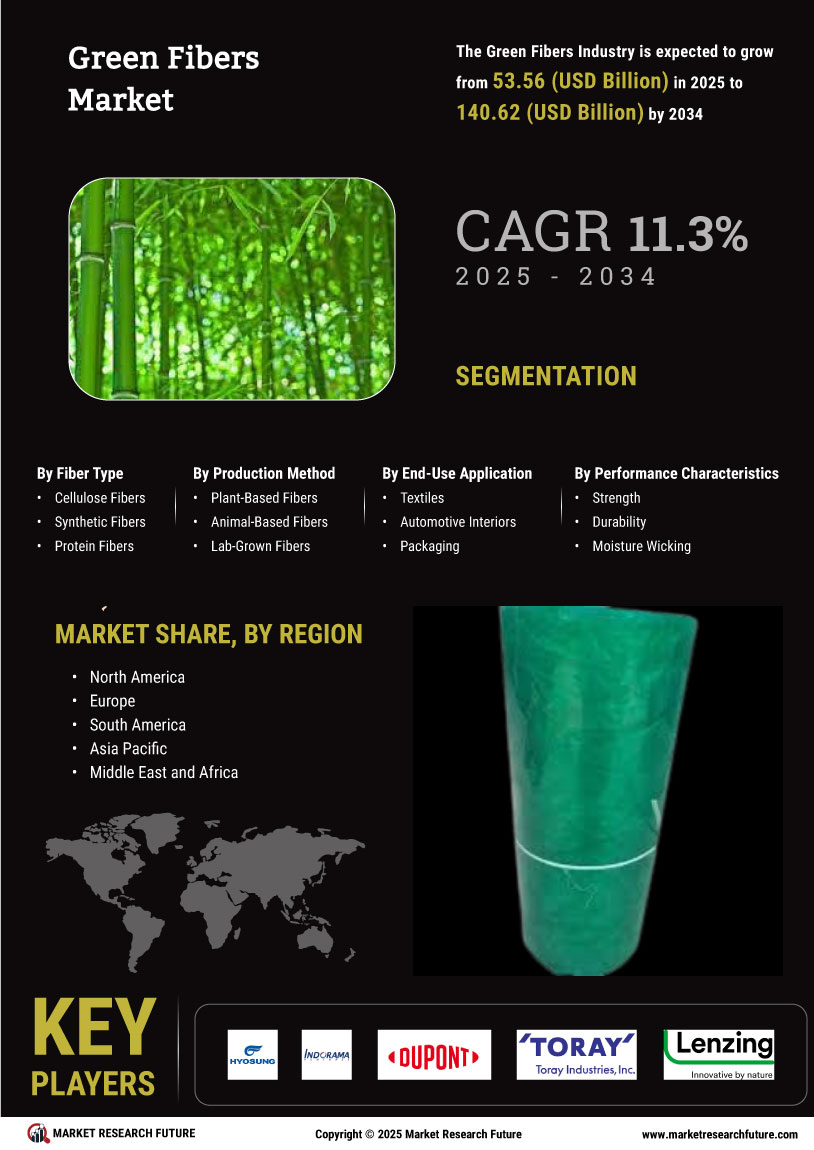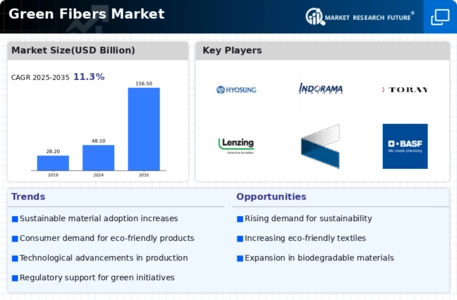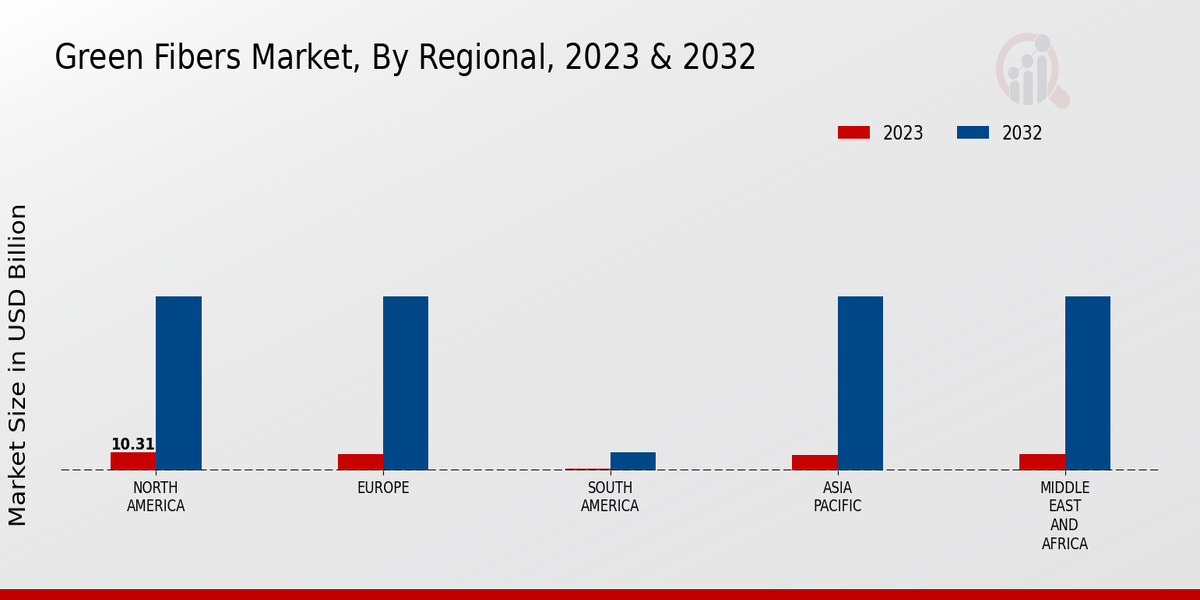Market Growth Projections
The Global Green Fibers Market Industry is poised for substantial growth, with projections indicating a market size of 48.1 USD Billion in 2024 and an anticipated increase to 156.5 USD Billion by 2035. This growth trajectory suggests a robust compound annual growth rate (CAGR) of 11.32% from 2025 to 2035. Such figures highlight the increasing adoption of green fibers across various sectors, driven by consumer demand for sustainable products and supportive government policies. The market's expansion reflects a broader shift towards sustainability, indicating a promising future for green fibers as industries continue to prioritize eco-friendly practices.
Government Initiatives and Regulations
Government initiatives and regulations play a pivotal role in shaping the Global Green Fibers Market Industry. Various countries are implementing policies that promote the use of renewable resources and sustainable materials. For instance, subsidies for organic farming and tax incentives for companies utilizing green fibers are becoming increasingly common. These measures not only encourage the production of green fibers but also enhance their competitiveness against conventional materials. As governments worldwide prioritize sustainability, the market is expected to benefit significantly, fostering an environment conducive to growth and innovation in the green fibers sector.
Rising Demand for Sustainable Products
The Global Green Fibers Market Industry experiences a notable surge in demand for sustainable products, driven by increasing consumer awareness regarding environmental issues. As consumers become more conscious of their purchasing decisions, they gravitate towards eco-friendly alternatives. This trend is reflected in the projected market size of 48.1 USD Billion in 2024, indicating a robust growth trajectory. Companies are responding by integrating green fibers into their product lines, which not only meets consumer expectations but also aligns with corporate sustainability goals. This shift towards sustainability is likely to propel the market further as more industries adopt green practices.
Increasing Applications Across Industries
The versatility of green fibers is expanding their applications across various industries, thereby fueling growth in the Global Green Fibers Market Industry. From textiles to automotive and construction, green fibers are being integrated into diverse products. For instance, the automotive sector is increasingly utilizing natural fibers for interior components, which not only reduces weight but also enhances sustainability. This trend is expected to contribute to the market's growth, with projections indicating a market size of 156.5 USD Billion by 2035. As more industries recognize the benefits of green fibers, their adoption is likely to accelerate, further driving market expansion.
Consumer Preference for Eco-Friendly Fashion
The Global Green Fibers Market Industry is significantly influenced by consumer preference for eco-friendly fashion. As sustainability becomes a core value for many consumers, brands are increasingly incorporating green fibers into their clothing lines. This shift is evident in the rise of sustainable fashion brands and the growing popularity of organic cotton, hemp, and bamboo fibers. The market is projected to grow at a CAGR of 11.32% from 2025 to 2035, reflecting the increasing demand for sustainable textiles. This consumer-driven trend is likely to encourage more manufacturers to invest in green fiber production, further solidifying the industry's growth.
Technological Advancements in Fiber Production
Technological advancements in fiber production are transforming the Global Green Fibers Market Industry. Innovations in processing techniques and biotechnology are enhancing the efficiency and quality of green fibers. For example, the development of bio-based polymers and advanced spinning technologies allows for the creation of high-performance fibers from renewable sources. These advancements not only reduce production costs but also improve the overall sustainability of the manufacturing process. As these technologies become more widely adopted, they are likely to drive market growth, making green fibers more accessible and appealing to a broader range of industries.



 Source: Primary Research, Secondary Research, MRFR Database and Analyst Review
Source: Primary Research, Secondary Research, MRFR Database and Analyst Review


















